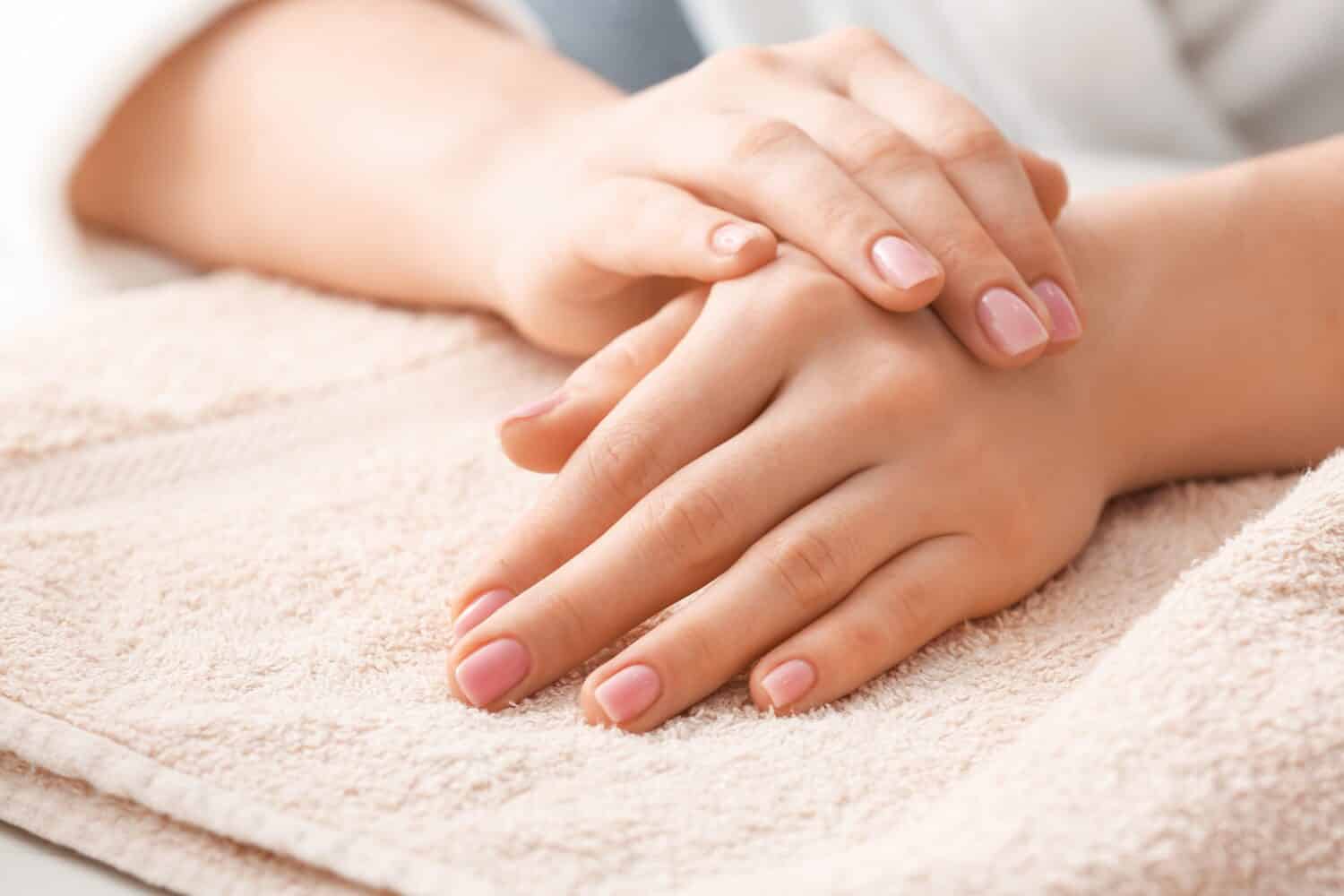Our nails are an essential part of our anatomy. Every day, we all work with our hands. Our hands are exposed to more germs than the rest of our bodies throughout the day. One reason our nails are so important to our anatomy is they offer a shield and protection to our hands and fingers. This is especially important since we use our fingers every day. The below nail health chart will give a snapshot of potential conditions when it comes to nail changes.
Additionally, our nails keep bacteria and viruses out of our bodies; therefore, having healthy nails is more vital than you may think. Nonetheless, how exactly do we identify potential problems with our nails? This article will take an in-depth look at the common problems that nail problems can indicate.
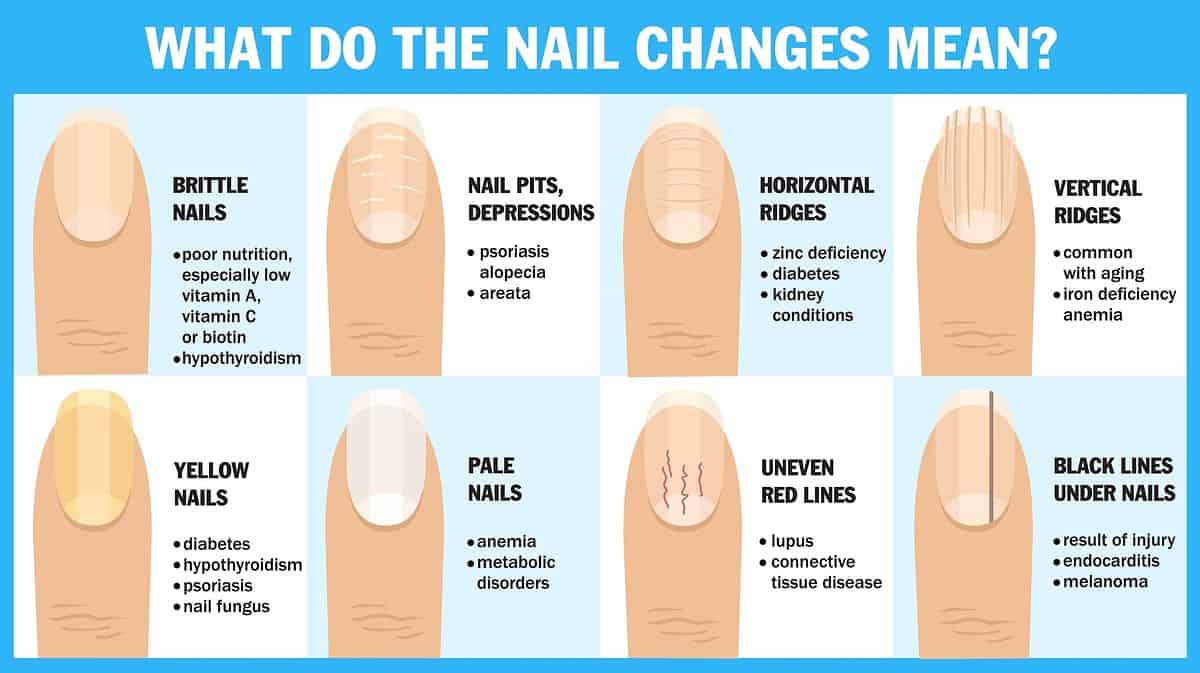
©Luis Line/Shutterstock.com
What is the Anatomy of Your Nail?
When looking at our nails, it may seem that the anatomy is pretty straightforward; however, our nails are more complex than you may realize. This is why looking at a nail health chart can help us identify potential problems.
Fingernails have three layers of keratin. Keratin is tissue and is in both hair and nails. Additionally, keratin has amino acid which is beneficial to our overall health.
- The must-have convenient reference guide for every home cook!
- Includes more than 8,000 substitutions for ingredients, cookware, and techniques.
- Save time and money on by avoiding trips to grab that "missing" ingredient you don't really need.
The three layers are soft, moderately soft, and hard keratin. All three of these layers are essential and protect our fingers. Moreover, the material that our fingernails and hair are made of is not living. Actually, they are dead cells but still need nutrients and proteins to grow correctly. Being able to identify when something may be going on with your nails is an essential part of keeping them healthy.
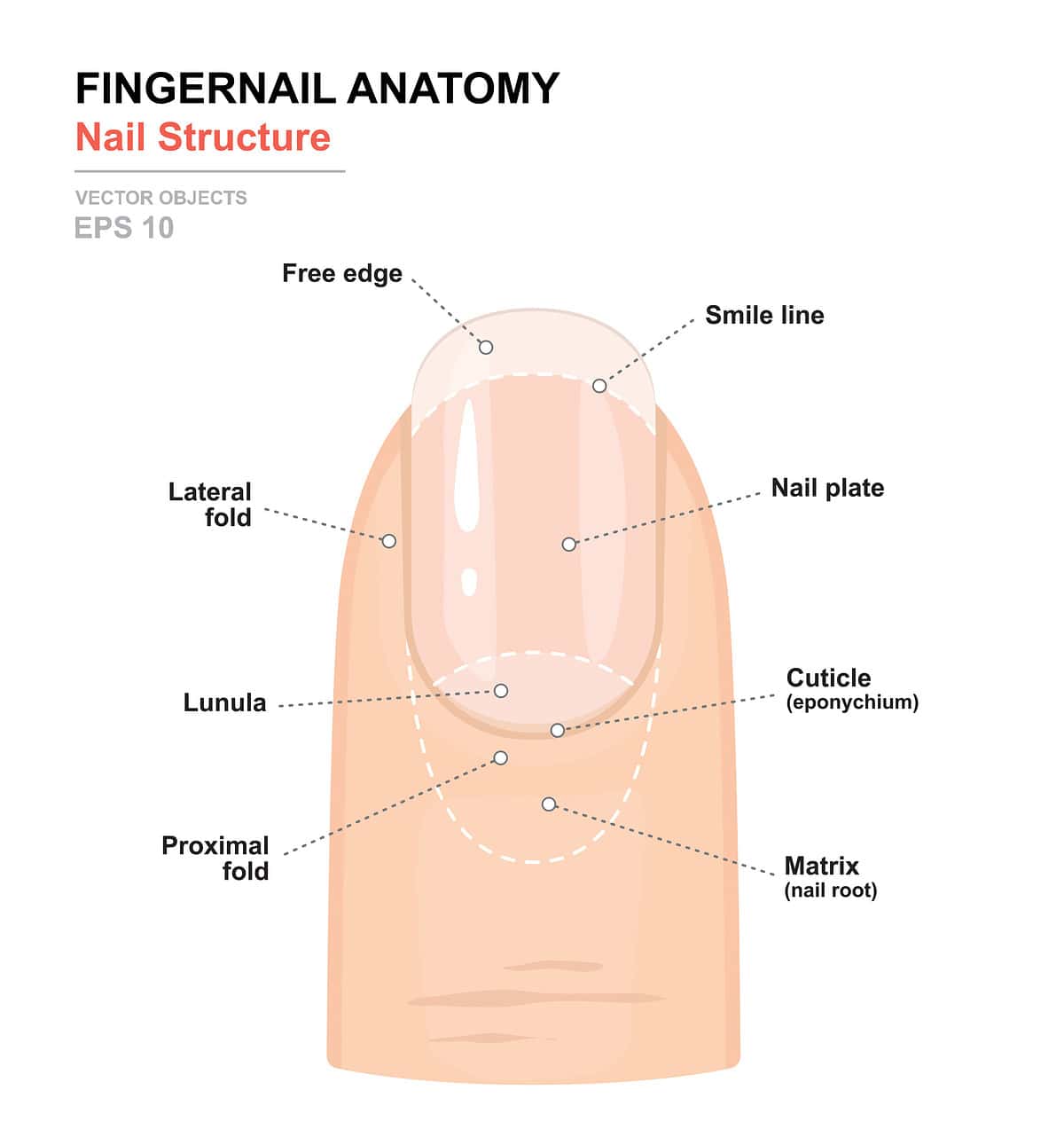
©Paper Teo/Shutterstock.com
Nail Chart: How to Identify Problems
Sometimes, you can identify potential medical conditions by looking at your fingernails. Let's look at these conditions presented in the nail health chart more deeply and what they could mean below.
What Can Brittle Nails Mean?
Brittle nails are one of the most common nail ailments. There are a few different conditions that can cause your nails to be brittle. Brittle nails are also common as you age, and one of the most prevalent reasons is washing your hands too much or using household cleaners. Some ways to protect against brittle nails are using moisturizers and gloves while doing chores or going outside in the cold.
This condition can be an indicator of poor nutrition and iron deficiency. Evaluating your diet and being sure to take in enough vitamins and iron can combat brittle nails.
Brittle nails can also be an indicator of hypothyroidism or low thyroid levels. Along with brittle nails, other symptoms may present, including fatigue, constipation, and hair loss. Raynaud's syndrome is another condition where brittle nails are a symptom. This includes circulation problems. If you believe your brittle nails may be because of one of these conditions, or if you are unsure, talk to your doctor for further evaluation.
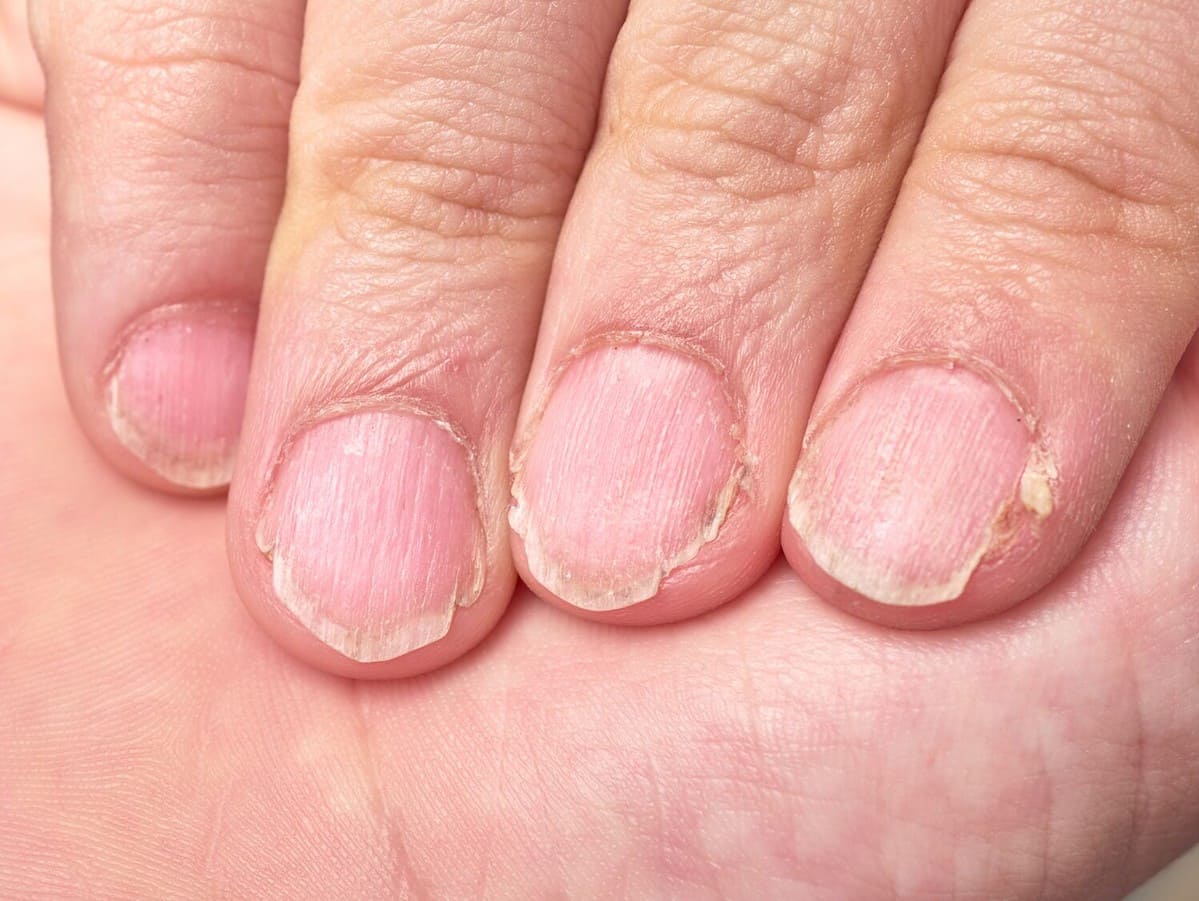
©NOVODIASTOCK/Shutterstock.com
What Can Cause Nail Pits and Depressions?
Nail pitting describes shallow or deep holes that appear in your nails. They may also appear to be white marks.
While nail pitting and depressions can happen for a few reasons, one of the most common reasons is nail psoriasis. If nail psoriasis is the reason, you may also have thickening in your nails, discoloration, and deformation. Nail psoriasis can happen in conjunction with other psoriasis symptoms like itchy and burning skin and swollen joints, or it can be a singular condition.
Nail pitting can also show up in conjunction with alopecia areata. This is an autoimmune disease that can also cause hair loss.
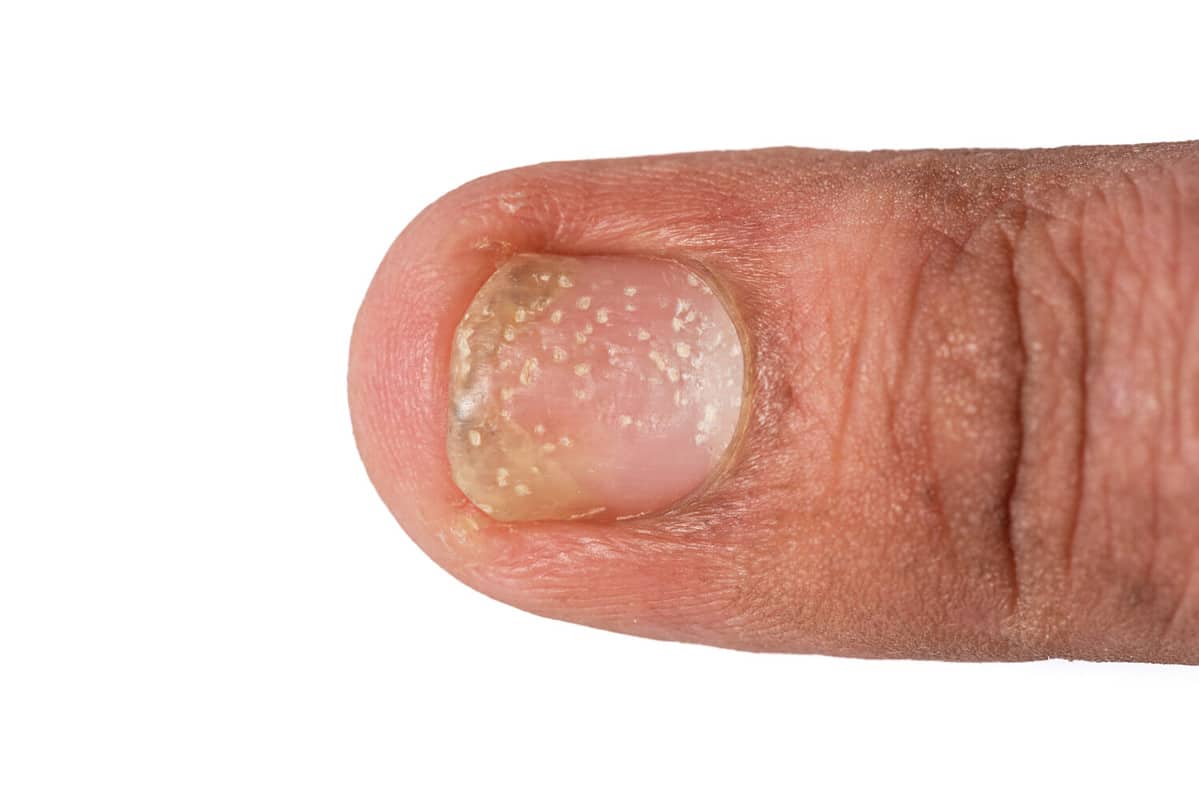
©sweetheart studio/Shutterstock.com
What Can Cause Yellow Nails?
It can be alarming to look at your nails and see they are yellow. Yellow nails can indicate an underlying medical condition or be due to harsh products or dyes. One way to tell the difference is to watch your nails grow out. If they continuously grow out yellow, seeking a medical opinion is essential. However, if your nail grows clear and healthy, the culprit may have just been a harsh chemical.
Yellow nails can be an indicator of a few different health conditions. The most common symptom of yellow nails is when they appear with a yellowish tent and can become thick or break easily. The most typical reason for yellow nails is a nail infection or fungus. One of the signs of a nail infection is a foul odor. If a nail fungus is the cause, seeing a dermatologist is an excellent idea to figure out a game plan moving forward.
Rare reasons for yellow nails are diabetes, hypothyroidism, and psoriasis. A healthcare professional can help you determine the underlying cause of yellow nails.
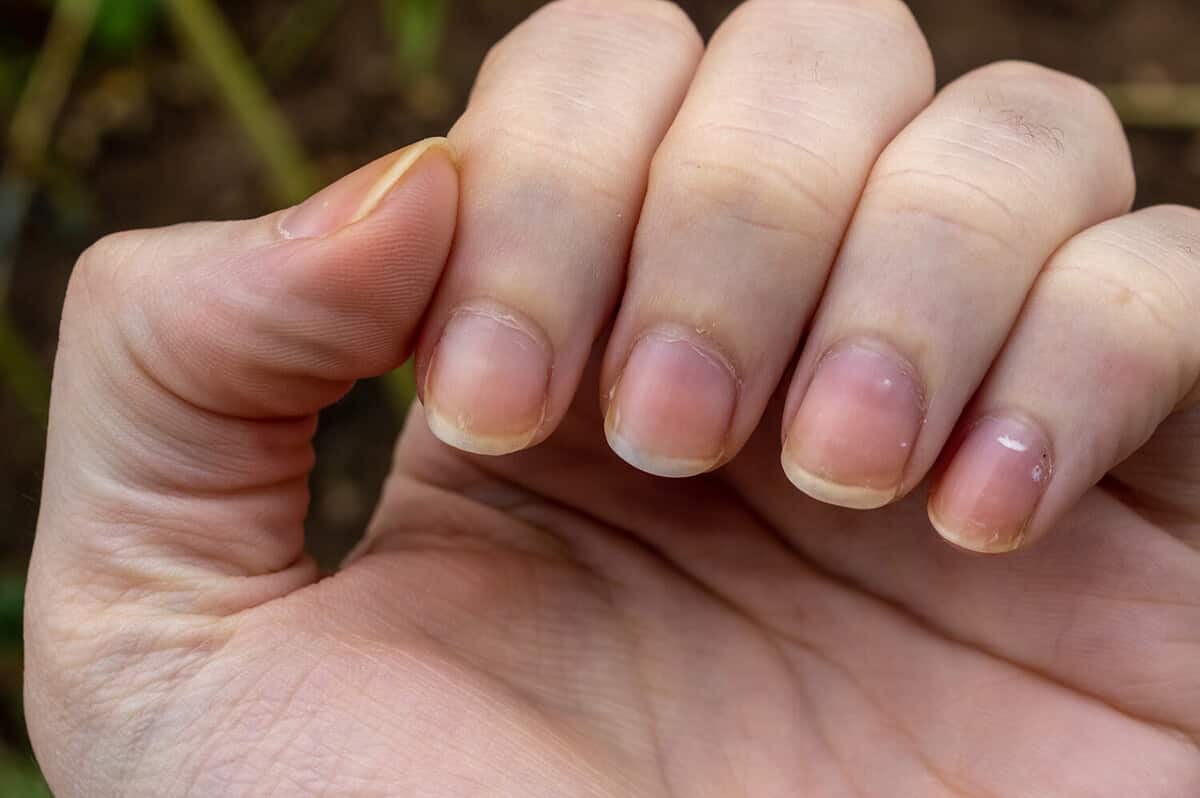
©Patri20/Shutterstock.com
What Can Cause Horizontal Ridges?
Horizontal ridges are also called Beau's lines. They are identified as horizontal ridges or indentions that cross your nails in a straight line.
- The must-have convenient reference guide for every home cook!
- Includes more than 8,000 substitutions for ingredients, cookware, and techniques.
- Save time and money on by avoiding trips to grab that "missing" ingredient you don't really need.
There are a few different causes for this nail condition. They include injury, illness, or even environmental factors.
Injuries that may cause Beau's lines are picking at the nails, an infection, or even getting a manicure. Typically, if an injury is the cause of Beau's lines, then it will be present in only one or two nails. However, if the horizontal lines are in several nails, this could indicate a more serious condition.
Environmental factors could include a zinc deficiency and may be coupled with symptoms of a loss of appetite or poor immune health. Another cause could be a side effect of chemotherapy.
More serious conditions that horizontal lines may indicate are kidney problems, including kidney failure, mumps, thyroid disease, syphilis, endocarditis, melanoma, scarlet fever, pneumonia, or diabetes.
What Can Cause Vertical Ridges?
Vertical ridges can also indicate a couple of different health conditions. This condition is identifiable by the deep ridges that go from the cuticle of your fingernail to the tip. Nails with vertical ridges can be a sign of aging. Many believe this is because our cell turnover slows down as we age. Injury to the nail or finger can also cause this condition.
Less common conditions include iron deficiency anemia, which will cause a spoon-shaped appearance, and pachyonychia, which will make the nails brittle and shiny.
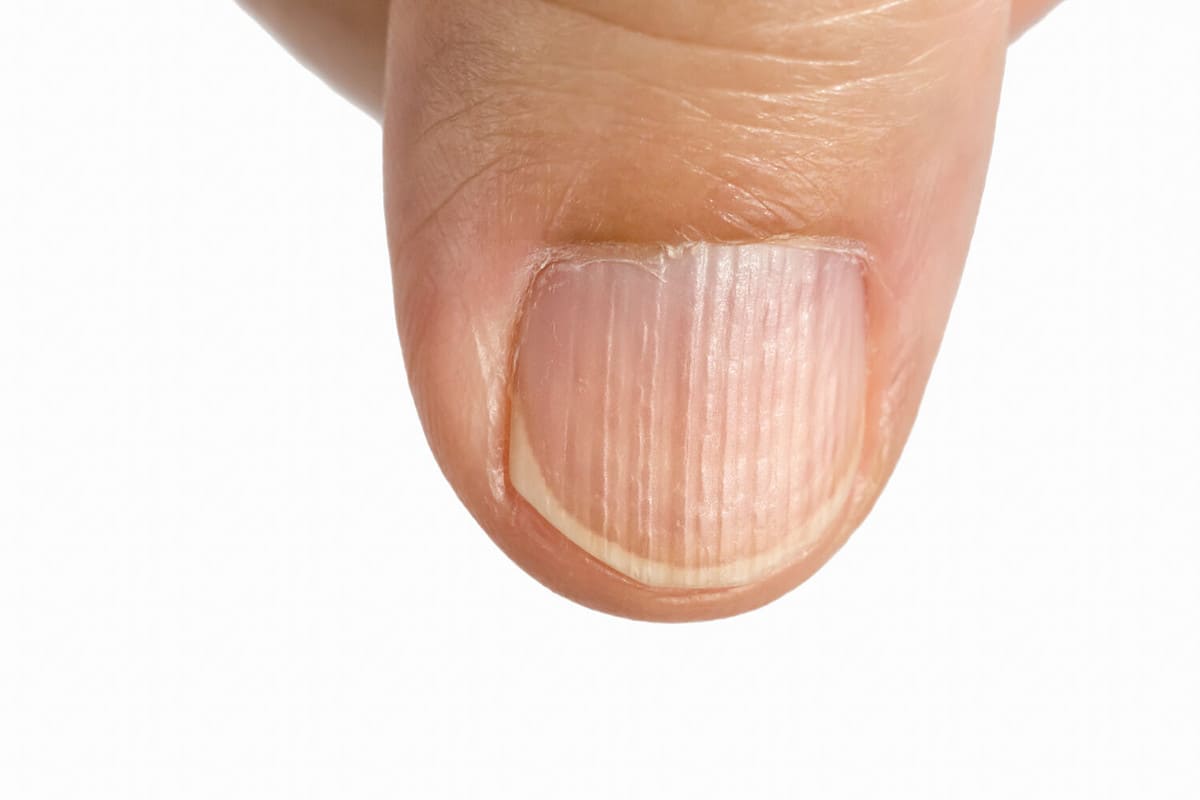
©Toa55/Shutterstock.com
What Can Cause Pale Nails?
When your nails do not have a healthy pink color below the nail bed, they may give off a paler look. If this is the case, it can indicate poor nutrition, metabolic disorders, and anemia. If your nails are white, not just pale, this could be a sign of liver disease, diabetes, or kidney disease.
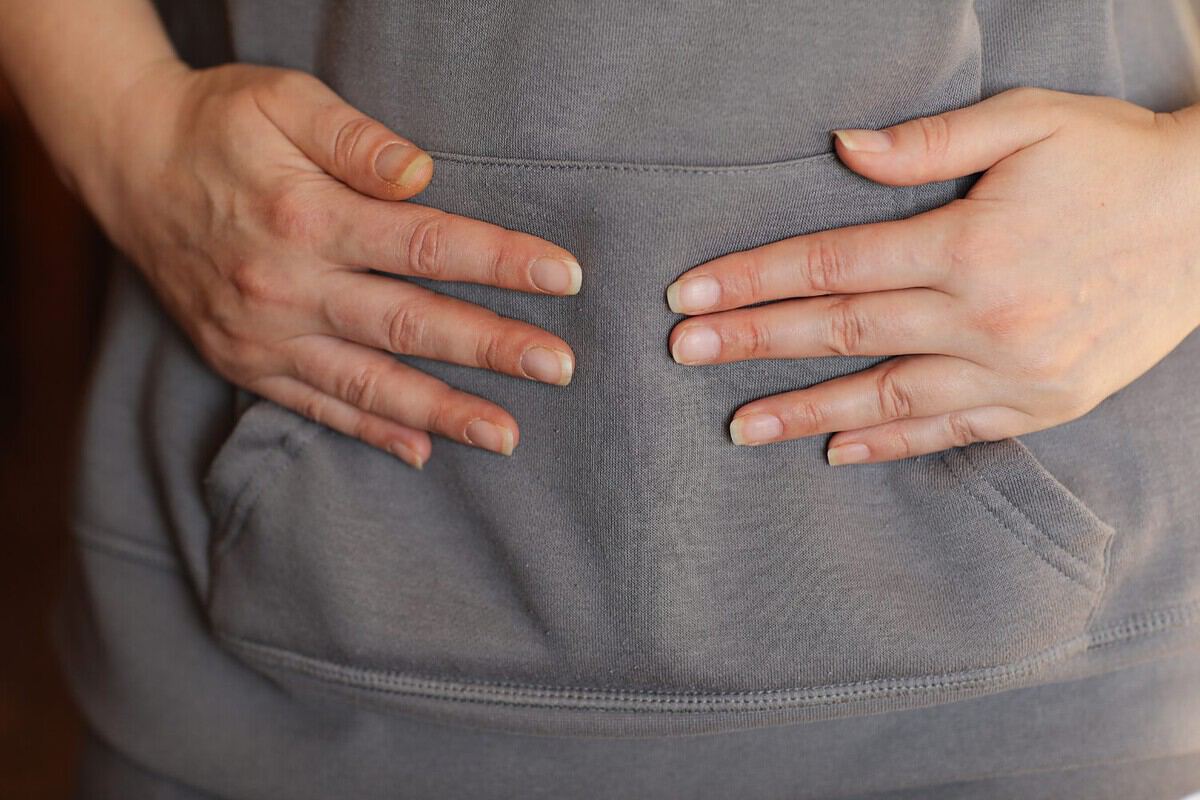
©Andrii Medvediuk/Shutterstock.com
What Can Cause Uneven Red Lines?
The presence of uneven lines that appear red or brown can be an indicator of lupus or a connective tissue disease. This condition is also known as splinter hemorrhage and can result from trauma to the nail bed.
What Can Cause Black Lines Under Nails?
A black line in your fingernail looks similar to a splinter. Sometimes, these lines can also be dark red or brown. The most common reason for black lines under the nails is an injury or a result of trauma to your nail. These injuries include dropping something heavy on your nail or getting caught in a car door.
A few other conditions that black lines can be an indicator of are melanoma, psoriasis, and endocarditis. Black lines caused by injury typically disappear when a new nail grows through. However, if it doesn't, talking to a healthcare provider can help determine if the cause is due to a different condition. Also, pay attention to other symptoms that may be coupled with the black lines, such as bleeding or nightly sweats.
Keeping Your Nails Healthy
Keeping our nails healthy is important for our overall health. There are several ways for us to protect our nails. We can limit the exposure to repeated, excessive handwashing and use moisturizer. Additionally, wearing gloves while doing household chores, especially working with chemicals, is another great way to protect our nails.
More ways to protect our nails include staying hydrated and eating healthy food that will give us vital vitamins and nutrients.
One Last Note
Our nails are an important part of our bodies that protect us and give us hints about what is going on with our health. Many different health conditions coincide with our nail health. Often, the state of our nails is simply due to a lack of proper nutrients or trauma to the nails. However, we can also have underlying medical conditions, and our nails can hint at what those might be. If you are concerned about a nail condition that was covered in the nail health chart, talking to a healthcare provider is the first step in figuring out what is happening with your nails!
Health Posts
The image featured at the top of this post is ©Pixel-Shot/Shutterstock.com.
- The must-have convenient reference guide for every home cook!
- Includes more than 8,000 substitutions for ingredients, cookware, and techniques.
- Save time and money on by avoiding trips to grab that "missing" ingredient you don't really need.
